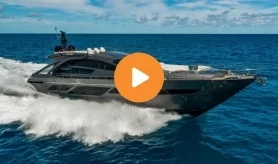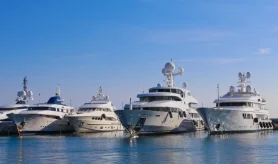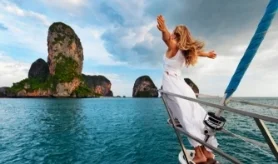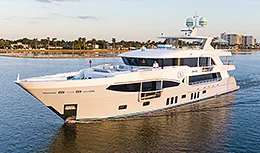- Alaskan Yachts
- Azimut Yachts
- Back Cove Yachts
- Beneteau Yachts
- Benetti Superyachts
- Bertram Yachts
- Boston Whaler
- Broward Yachts
- Buddy Davis Sportfish
- Burger Yachts
- Cabo Yachts
- Catamarans
- Carver Motoryachts
- Center Console
- Chris-Craft Yachts
- Cruisers Yachts
- DeFever Trawlers
- Dufour Sailboats
- Fairline Yachts
- Feadship Yachts
- Ferretti Yachts
- Formula Yachts
- Fountaine Pajot Cats
- Grady-White
- Grand Banks Trawlers
- Hargrave Yachts
- Hatteras Yachts
- Hinckley Picnic Boats
- Horizon Yachts
- Hydra-Sports
- Intrepid Boats
- Jarrett Bay Sportfish
- Jeanneau Yachts
- Kadey-Krogen Trawlers
- Lazzara Yachts
- Lekker Boats
- Luhrs Sportfish
- Marlow Yachts
- Maritimo Yachts
- Marquis Yachts
- Mazu Yachts
- McKinna Motoryachts
- Meridian Yachts
- Midnight Express
- MJM Yachts
- Mochi Craft
- Neptunus Motoryachts
- Nordhavn Trawlers
- Nordic Tugs
- Numarine Yachts
- Ocean Alexander Yachts
- Ocean King
- Offshore Yachts
- Outer Reef
- Oyster Sailing Yachts
- Pacific Mariner Yachts
- Palmer Johnson Yachts
Bertram 670 Convertible
![]()
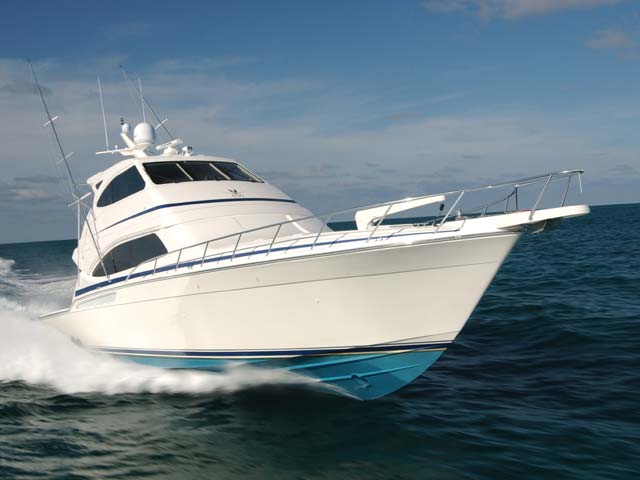
Source: David Lockwood, Boatpoint Magazine
The Bertram 670E is breathing new life into the flybridge cruiser, writes David Lockwood
There are some people who would have you believe that the flybridge boat is dead in the water, yesterday’s hero. Usually, these self-appointed soothsayers sell sports cruisers or, as I’ve heard from a colleague in the industry, they’re merely regurgitating the line fed to them by someone who sells some other style of motorboat. But look through the pages of an American boating journal and you will see otherwise. Or head to the west coast of this country, where you’ll be assured that the flybridge boat has plenty of distance to run.
As a fan of the flybridge cruiser I found it both a real eye opener and a comforting exercise to stroll the long docks at Fremantle Sailing Club, the largest marina of its kind in the southern hemisphere and home to many boats sporting flybridges. But I’m not talking about the usual 35-40 footers we see on the east coast. Nor the latest shift to 47 and 50ft flybridge boats that’s underway. Due to the weather in the west and the often confronting seas, flybridge boats are more common in the 55-65ft range.
Among the beefy bridges were the usual local heroes: WA-built Precisions, Randall, the more recent Key West, and big production-built Caribbeans and Rivieras. But the flybridge cruiser I was there to see, the fully imported Bertram 670E, is in a league of its own. The E stands for enclosed flybridge, but Bertram stands for something else again.
The local Bertram distributor Peter Sarich made it known from the outset that “if it’s really bad weather, it’s Bertram weather”.
Apparently they get plenty of the bad stuff in WA, with the local wind filling in to 25-30kt by 11am in summer and producing 1.5 to 2.5m wind waves. In winter, there’s a heavy northerly swell often 3.5 to 5m to contend with. Big flybridge boats are in their element either way.
Sarich says there is no substitute for waterline length when it comes to tackling big seas.
The 49,000kg fully laden boat with twin 2000hp MTU V16 diesel motors can hurtle into the fray at 33kt, while a light ship will top out at 39kt. At such speeds, one depends on their boat’s engineering.
Though revered by the big gamefishing fraternity, this Bertram 670E was set up especially for high-speed long-haul west coast cruising. As such, you’re looking at a 380 nautical mile range at 33kt while riding in an air-conditioned, enclosed bridge that affords a wonderful view of the road ahead.
That ocean road might lead to the Abrolhos Islands or Broome but, as Sarich explains, boats like this open up a lot of new coastal destinations in the west or, for that matter, whatever coast you’re cruising. The 670E carries 7600lt of fuel, 1323lt of water, plus an unlimited resupply thanks to a desalinator. There were also satellite communications and lots more to embrace.
EAGLE HAS LANDED
Eagle Yachts, the local importer and distributor for Bertram, which is owned by the Italian Ferretti Group, intends being here for the long haul. It has opened offices on the east and west coasts, and invested more than $15 million in start-up costs that, at the time of writing, covered a 51, 57, and this 670E. These three Bertrams were joined by a new 630 and a 670, heading for the local gamefishing circuit. Next on the dock will be a new 360 and 630E, then another 51 and 57.
“The idea is to have stock boats in each of our three localities (WA, QLD, and NSW) and to provide service as part of the Bertram package using an established team and a tailored program,” Sarich said. With a 5.7m beam and a draft of 1.6m, the 670E is a high volume vessel with a lot of boat below the water. Inside, you get the impression you are on a small ship as you stroll through the accommodation and down again to the owner’s amidships cabin. Yet volume can be deceptive.
The 670E has Bertram’s latest-generation hull that resulted from a hydrodynamic study of pre-existing models. The entry is fine and deadrise of 17 degrees tapers to 12 degrees two thirds along the hull. There are half prop tunnels, extra large chines, and heavy-duty running gear: 3.25-inch shafts, huge bronze rudders and stocks, and Rolla five-blade props. And, of course, the necessarily beefy engine bearers for the V16 MTUs.
Fuel and water tanks are an integral part of the hull, with the former located amidships where it has zero affect on trim. The boat has been designed to run flat, without rattles, creaks or groans. Built to Rina Class A, the boat has a solid GRP bottom, keel and chines, vacuum-bagged foam-sandwich sides, deck and flybridge house, beefed up lay up on the high-load areas, cabinet work glassed in to the hull, and a network of big box stringers.
There are remote fuel and engine-vent shutoffs, and an engine room with headroom.
STANDING HEIGHT
The one big engine room includes an aft utility space fitted with two big 23kva Kohler generators that power all of the boat’s live-aboard amenities.
You can run most of the boat’s amenities on one generator thereby providing a terrific degree of independence should one generator wear out. There are lift-out cockpit floor panels in case a generator rebuild is necessary and sea strainers and fuel filters that can be easily checked. Having the generators back aft also ensures you sleep soundly should you decide to run the chilled-water air conditioning system through the night. The boat has twin 15-amp shorepower leads with Glendinning Cablemasters.
The engine room ceiling lifts out so you can crane a motor out of the removable frameless aft saloon window should the worst eventuate. Sound insulation adds to the MTU 2000 Series’ quiet running and there’s a Delta T venting system with fans and filters so the motors use clean air.
Each motor has a fuel filter and XOS-sized sea strainer with glass inspection bowl.
The oil-change system has a cockpit outlet so you don’t need to lug drums out of the engine room and I noted switchable engine pickups so you can drain the engine room in an emergency.
On the electrical front, all the engine wiring looms are labelled, colour-coded, and numbered. They are accessible in dedicated conduits that run throughout the boat. The plumbing for items such as air-conditioning and generator water exit the boat through a common drain line.
A 10hp bowthruster assists with manoeuvring in close quarters, while the MTUs come with fully electronic shifts with various cruise-friendly and low-idle or troll settings. You could also monitor the motors from the bridge on closed-circuit cameras.
While built to last and fitted with the latest high-tech components, I thought Bertram’s 670E had a degree of utility about it, good simple systems and excellent access to encourage maintenance. The over-engineering on the construction front comes as a result of the high-powered American gamefishing circuit, but the spin-off, the comfortable high-speed offshore cruising, is something families can enjoy on the 670E too.
The boat has plenty of refrigeration and, in the open version preferred for gamefishing, there’s scope to fit more. The 670E had a eutectic fridge with a stainless steel insert in the cockpit, wet bar with icemaker indoors, a domestic-sized 240/24V fridge, and an additional under-counter fridge and freezer drawers in the galley. Like most big boats, most of its DC systems from heads and pumps to lights and entertainment operated off 24V.
DECKED OUT
The cockpit will play into the hands and hearts of Australian boaters who enjoy kicking back on deck. The addition of an overhead awning provides additional shade and shelter.
All the hardware is heavy-duty, with the bowrail fashioned from anodised aluminium which, at some speeds, developed a vibration. I thought access to the foredeck was good, aided by moulded toe rails and alloy grab rails and a non-skid surface.
There’s plenty of scope to fit a decent tender and high-lift crane. This boat has a 3.9m RIB with 30hp outboard, packaged with a big Bruce anchor and 70m of chain, mooring lines, life ring and more.
Back in the 15.6 square-metre cockpit, deck hatches with gaskets grant access to the lazarette, the steering gear, and a huge transverse fish box with macerator and removable liner. There are padded coamings, below-gunwale cleats, fresh and saltwater washdowns, a reinforced floor in case you want to swing a game chair instead of a lunch table, an in-transom fish or ice box, lots of tackle drawers, rod holders, and a clever lock-up rod compartment with washdown. The moulded bait/food prep centre against the saloon bulkhead includes a sink, cutting board and storage drawers. The marlin board and hot/cold handheld shower will serve swimmers and keen divers well, but some might want to consider having a compressor fitted somewhere. All you need are some chairs or sun lounges and you’re set for a cruising adventure.
And with four steps leading up to the saloon, I reckon there’s no chance of putting water inside should you reverse into a big sea. Going forward, the boat’s high bow kicking up from the sheerline sheds water at high and low speeds.
NEW EURO INTERIOR
While the Bertram history is reflected in the engineering, the new owners, the Ferretti Group, had a hand in the boat’s rakish superstructure. The interior was a collaborative effort between Florida-based interior décor house Marty A. Lowe and the Italian Zuccon International Project. The interior of the roomy four-cabin/four-head boat featured all high-gloss cherry wood joinery, including the internal starboard stairwell. Such was its presence that I was lured upstairs to the enclosed bridge, a feature that adds to the cruising pleasure of this big Bertram.
Before the dash was two Stidd helm chairs to match the blue Ultraleather L-shaped lounge, which converts into a double bed.
There was lots of glass and, with the big views, a Bose sound system, a flip-down television in the roof, air-conditioning, icemaker and fridge, and a ducted vacuum system, the boat could host a rooftop party of eight people.
The aft bridge overhang had a separate set of controls, a three-person lounge and room to assemble a table and chairs. The electronics included a Northstar 600i GPS chart plotter, a Furuno depth and temperature gauge, three 15-inch Simrad multifunction GPS screens that can each be split two or four ways, Simrad autopilot, ARC spotlight, and MTU colour engine-monitoring panels. The MTU electronic shifts have trolling and synchro functions. In the bridge, engine noise isn’t an issue, with only some turbo whine at low-cruise speeds. As you might guess the boat prefers to be run hard.
Inside the open-plan saloon there was an almost clubby feel derived from the portside built-in armchairs flanking a settee, surrounded by storage lockers and cabinets, before a coffee table with burl timber top. The AC/DC control panel is nearby, but the piece de resistance is the starboard walk-in wet bar serving the lounge room. It has a sink, bootleg lockers, an icemaker, and Bertram-badged glasses, tumblers and mugs.
Up a step is the starboard dinette, which has for four to six if you use some tub chairs. Traced by granite bench tops, the galley opposite was a veritable kitchen, with under-counter fridge and freezer drawers, a second full-height fridge/freezer, convection microwave, Gaggenau oven and four-burner cooktop, twin sinks, garbage compactor, and adequate storage space. As with most boats of this calibre there is a trick lighting system with up, down and mood lights with dimmers.
SHIPLIKE CABINS
You start to get an idea of the immense volume of this 67-footer when you range down to your accommodation. The owner’s full-width stateroom amidships has a king-size bed flanked by a dresser and stool, and a walk-in wardrobe with full-height mirror. Each of the four cabins has its own air-conditioner and entertainment controls. The boat’s invertor can run the sound and televisions and the fridges overnight without the generator. Bertram’s ensuites have come under fire from some quarters for their avant garde finish, which includes printed wallpaper. The owner’s ensuite has a bone marble vanity top with dual sinks, linen storage, a huge shower, extractor fan, a mirrored ceiling, and timber flooring.
The dayhead/crew ensuite also leads off the foyer, where it’s handy to guests and includes a shower stall and opening hatch. The port crew cabin has twin adult-length bunks with innerspring mattresses.
The third cabin was opposite, with twin single beds and plenty of style. There was yet more storage here and plenty of headroom, plus another ensuite with shower stall and toilet.
The forward cabin has a queen-size island bed, oversized cedar hanging locker, storage lockers and drawers, built-in alarm clock and separate television with DVD player. As to be expected, performance is Bertram’s strength. At a lazy 1600rpm the MTUs thrust it to 21kt, where both motors were consuming 320lt/h for a safe cruising range of 450 nautical miles with 10 per cent of the fuel in reserve. At 1800rpm the motors drove the boat to 25kt for 448lt total fuel consumption and a range of 380 nautical miles.
But I got the impression that the boat and motors wanted to open up some more, so I struck a nice cruise of 29kt at 2000rpm, consuming 520lt of fuel per hour for a safe but more sprightly cruising range of 380 nautical miles again.
Ferretti quotes a 33kt cruise and, at 32.8 knots and 2200rpm, the MTUs drank 640lt in total for a 350 nautical mile range in about 10 and half hours. At top speed, the Bertram flies. The 670E is a serious offshore flyer that teams a flash interior with family amenities. And in so doing, Bertram has breathed new life into the flybridge cruiser. Way to go.
HIGHS
- Terrific engineering for high-speed, long-range offshore passage making
- A great motion at sea
- A very accommodating interior with plenty of amenities and accessories
- A great overall look
LOWS
- Big-ticket boat that consumes lots of fuel
- Watermaker under the companionway
- No 240V outlets in the cockpit for a barbecue
- The interior finish won’t be to everyone’s tastes
- No blinds on the flybridge windows
- Inconvenient placing of electronics and navigation screen
- No pullout pantry in the galley
- Bowrail vibrates at certain speeds
|
